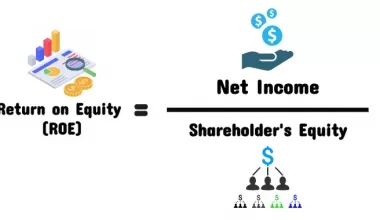How well do you understand your customers? If you’re like most of us, you’re probably not performing as well as you could. Because you don’t completely understand the needs of a customer, product teams, designers, and marketers, you tend to frequently make assumptions about how to meet those needs. Consequently, developing customer personas is crucial. In this article, you will learn more about customer persona, its example, creating, the way of marketing it, and its importance.
Customer Persona
Based on the data you’ve gathered from user research and web analytics, a customer persona, also known as a buyer persona, is a semi-fictional archetype that embodies the fundamental characteristics of a significant portion of your audience. It informs you of the thoughts and actions of your potential customers as they research different solutions to the issue they’re trying to solve.
It is a fictional profile created to reflect a certain target customer. A small group of employees often serves the majority of customers in businesses. These personas are based on data and research, some of which will come from your actual customers, if you have any, even though they aren’t real people. Customer personas are particularly helpful for marketing and product design teams in helping companies understand the individuals they are attempting to sell to and how those people will use their product or service. A complete persona will include information about the person’s hobbies, issues, and purchase motivations in addition to demographic information (such as age, gender, and income). The amount of information you supply is up to you, but in general, the more information you give—and we’re talking about developing the persona and giving it a name—the more beneficial the method will be.
Customer Persona Example
Here are a few example of customer persona that have been expertly created.
#1. Example of Customer Persona: Sunburn Festival Annual Electronic Dance Music
- Female; 25 or 26 years old; age range: 22 to 29
- Using social media at least once per day
- A new corporate position (hence has a disposable income)
- Searches for early bird bargains and loves internet shopping
- Has visited Sunburn at least once in the past
- Conceives events with friends in groups.
- Enjoys meeting people who share his opinions
#2. Example of Customer Persona: Manchester United The English football team has a colorful past.
- Male, age 29,
- Stream at least one game every month, either on television or through an app.
- Plans to watch a real athletic event at Old Trafford
- Has monitored the team’s performance for a minimum of a few years.
- Tries to play real football once a week with family or friends.
- Participates in events where fantasy football teams are chosen
- Discussions about the team with relatives and other supporters
- Is steadfastly committed, making them invaluable for generating favorable word-of-mouth
#3. Example of Customer Persona: Visit Australia The Official government Body in Australia for Promoting Travel
- 35-year-old man
- Vacations that have been scheduled with the wife or family
- Has at least once traveled outside of their country of birth
- I want to go hiking, glamping, and on safari vacations.
- Whenever possible, seek out luxurious amenities.
- Dislikes following a routine
These companies for example, get more patrons, fans, and visitors by basing their ticket promotions, membership perks, and marketing methods on such complete customer personas.
Creating a Customer Persona
There are several process to take in creating a customer persona. Hence, the creating of the customer persona include:
#1. Choose Your Focus.
The first process to take in creating a customer persona is to choose a good focus to center your attention on. A broad understanding of your target audience and the information you need to know about them is a smart place to start. Consider your company’s goals and ideals in addition to your current clientele and the demographics you believe your product will naturally serve or appeal to. You should be able to derive a general breakdown of your consumer base from this. A customer segment for a pet wellness brand, for example, may be urban millennials with dogs.
#2. Begin Your Research.
Begin with what is most easily accessible to you in creating a customer persona. This could include communicating with customer service representatives, evaluating the followers and feeds on your and your competitor’s social media accounts, reading reviews and research articles, and searching consumer databases. Gather as much demographic information as possible while keeping an eye out for common themes or beliefs.
#3. Gather Additional Information.
In this case, you may issue a poll to your customers via social media or email. In general, you should have a solid understanding of your intended audience, to the point that you can categorize them. Speaking with clients from each group could be quite beneficial. You might find our user research guide useful in locating these folks and developing questions to ask them. Three to five interviews for each customer persona type would be a good starting point in creating or getting an information.
#4. Go Over Your Research Again.
Choose a few identities and spend some time refining the similarities you’ve discovered. To prevent spreading your early marketing efforts too thin, it is recommended to start small, with two to five personas.
#5. Give Names and Faces to People.
Creating your identities with color and inventiveness. Make use of the template linked below as a guide. After naming each persona, select a picture or sketch of how you want them to appear. Age, gender, locality, income level, marriage or family status, degree of education, and career should then be documented.
#6. Carry On.
Consider your passions, values, and goals. Broad categories include a person’s motivations, problems, ambitions, actions at work and play, the people they spend time with, their interests and pet peeves, and so on. You can back it up with quotes from your interviewers or data analysis results. Keep your questioning open when attempting to understand behaviors and reasons in order to obtain as much information as possible.
#7. Make your Identities Visible to the Public.
As previously said, it is critical that you use your personas to drive future decisions. Make sure a digital copy of the exercise is preserved in an easily accessible location, and teach your team about its purpose and how you want it to be used across departments. Request feedback on the personas from any team members who were not engaged in their creation.
#8. Refresh as Needed.
As you expand and, hopefully, attract more clients, you’ll need to assess your buyer personas. Update old ones and add new ones. This is especially true if you’re entering a new market, launching a new product, adjusting your pricing strategy, or experiencing significant societal shifts. Make it clear who will be in charge of your customer identities, whether it’s you, someone else, or a group of people. You should not store your client identities on a shared disk.
Customer Persona Marketing
A customer marketing persona is a fictional representation of a significant portion of your target market. You can develop a marketing strategy that is more advantageous and pertinent to the clients that matter most to your company. Again, the three elements of effective marketing are knowing what to say, how to say it, and when to say it. The customer marketing persona deal with this problem by giving fictitious customers genuine names and identities.
The following information about the potential client should be included in a marketing persona at the very least:
- Demographics include household size, income, age, and gender.
- Personal values and goals
- Information about careers and the workplace
The position of the consumer in the purchasing process is the last component of the puzzle that many marketers may want to take into account. The buyer’s journey, as it is popularly defined, is the procedure each consumer goes through from discovering your product or service to making a purchase. There are three steps in this process, which are:
- Awareness (when they become aware of a need),
- Consideration (when they look into potential solutions like products and services), and
- Decision (the customer purchases your product or service – i.e. converts).
Kate, a 35-year-old Los Angeles-based single lady, would be a good example of an ideal customer in persona marketing example. Kate earns $80,000 working as an executive assistant in the entertainment business. She recently started hiking recreationally, so she wants to get her first set of hiking boots. She enjoys her job, which necessitates that she dress nicely and wear the latest fashions, so when she makes purchases, she considers both quality and style.
Kate needs to hear about these ideals in a way that will resonate with newcomers who are still deliberating their options. Roy, a devoted client, experienced hiker, and retired guy who is preparing to climb the Pacific Crest Trail, is the best person to discuss intricate boot comparisons and new features with.
What is the Importance of Customer Persona in Marketing
Meeting customer demands successfully is the goal of marketing persona. The aforementioned examples show how creating marketing personas may help you understand your target audience more thoroughly and cater to their demands. It may be easier to understand a consumer’s values and determine what they require from your product, service, or marketing approach if you can identify them by name, age, and a variety of activities and experiences.
Consequently, personas aid in defining and comprehending your target audience… However, why is that so crucial? In other words, you won’t be able to understand what your audience wants if you don’t know who they are. You cannot satisfy their requirements, much less do so profitably, if you do not comprehend them.
Marketing personas assist marketers in making better use of their time and resources by outlining the requirements of their ideal clients. The following tasks benefit from the use of marketing personas:
- Campaign modifications
- Making content (including email campaigns and blog posts)
- Use of social media (such as on Facebook, Instagram, and LinkedIn)
- Overcoming obstacles in marketing in general
- Efficient and coordinated product development
Customer Persona Importance
To learn more about the importance of customer persona, you need to know that they can offer your company a plethora of knowledge and value. Each member of your team can receive help from them, and it includes:
- Learn more about consumer preferences and how to meet them. It also arranges product creation by including elements that aid consumers in achieving their goals.
- Customer personas are important because they aid in determining which projects, marketing campaigns, and activities should be given the most attention and funding.
- Customer personas are also important because they promote organizational alignment and unite several teams around a common, customer-centered objective.
- However, you’ll be better prepared to look after your clients and provide a top-notch experience that encourages referrals. Your entire product development process, user experience, and marketing campaigns will suffer if you don’t define your consumer personas.
- For a small business, it is important during the clarification stage and doesn’t have to be expensive. Knowing who your customers are will be helpful to every member of your team, from sales and marketing to customer support and product development. With this common understanding, you’ll be able to spot issues that need to be resolved, determine the best options for content, product design, and communication strategies, and decide how to draw in and keep customers.
After all, personalization is important. According to a 2018 survey, 88% of consumers are more likely to buy a good or service from a company that offers personalized experiences, and 91% of people are more eager to shop with companies that offer relevant offers and recommendations. Personas can be important at any point in your company’s development, but they are most helpful at the beginning. As your clientele changes, you ought to revisit them. You can uncover new issues, demands, and potential product improvements by routinely evaluating personas. As you are able to add more value, you are closer to your customer.
Which are the Two Main Types of Customer Personas?
- User personas
- Buyer personas
What are the three Core Components of Personas?
- Artificial name Major tasks and job titles.
- Demographics such as age, level of education, race,
- Family situation.
What is the Purpose of Customer Personas?
Customer personas are particularly helpful for marketing and product design teams in helping companies understand the individuals they are attempting to sell to and how those people will use their product or service.
How Can You Make a Good Customer Persona?
The following details should serve as the foundation for creating a persona:
- Data on demographics Age
- Gender
- Estimated range of income
- Location Family size
- Psychological details
- Goals
- Challenges
- Type of personality
- Motivations
- Particularly if you are in the B2B sector, professional details
- Position title and level
- Ability to make decisions
- Tools employed and tool expenditures
- Proximity to the goals of the product or business
- Bonus data
- A photograph of your intended audience or client
- A fictitious one-paragraph biography that summarizes their life
- 1-2 quotations that express their goals
- Preferences and interests
- What journals, magazines, and books did they read
- Which articles or blog entries did they read on your site
- What fashions or subcultures they might adhere to
How Do You Create a Persona?
- Take note of the details about your users.
- Study research data to spot behavioral patterns.
- Prioritize your personalities after creating them.
- Find interactional scenario(s) and produce user persona documentation.
- Present your findings to the group and get their approval.
Related Articles
- SOCIAL MEDIA MARKETING STRATEGY 2023: A detailed guide(+free template)
- Target Marketing: All you need to Know
- Buyer’s Journey: Meaning, Stages & How to Implement in Sales Process
- PER CAPITA INCOME: Definition & What You Must Know






